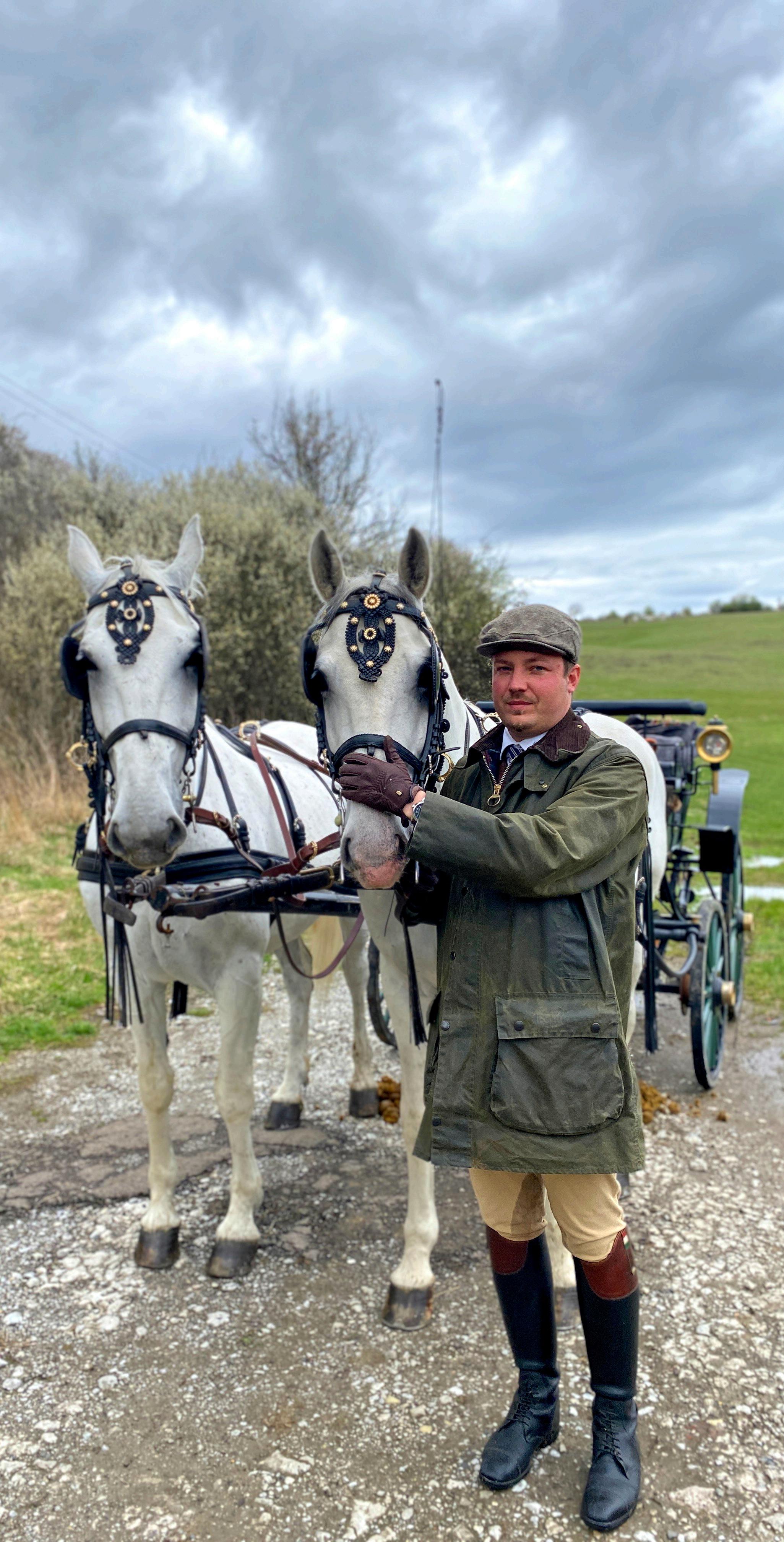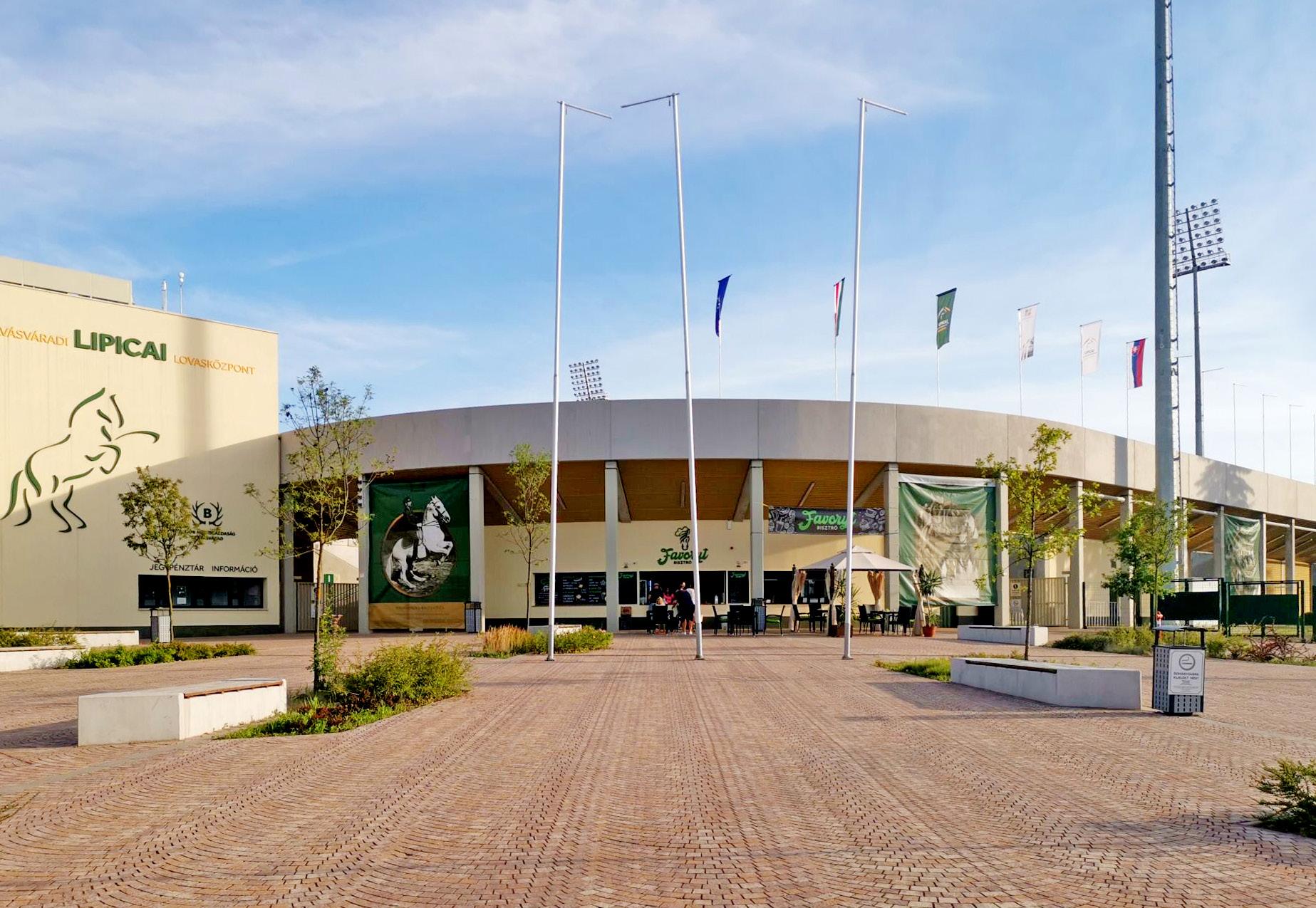
5 minute read
Feature: The beauty of Baroque
FEATURE
The beauty of Baroque
With its spectacular horses and a pristine setting, the Szilvásvárad Lipizzaner Stud is a sight to behold, writes JESSICA MORTON.
The Szilvásvárad National Stud is the second largest Lipizzaner breeding facility in the world. Located around 160 kilometres from Budapest, it sits in a natural wonderland of forests, lakes, waterfalls, and even prehistoric caves.
I met stud director David Cseri to take a carriage tour of the property and learn about the Lipizzaner’s long and interesting history, and what lies ahead for them.
Lipizzaners in Hungary
An accomplished show jumper and lover of Thoroughbred racing, David is also a historian with three published books on Hungary’s equestrian heritage, and when called on for military duties, serves in the Hungarian hussars as a reserve captain.
His main aim now though, is to promote the Lipizzaner breed to the world and see Hungarian riders compete internationally with locally bred horses.
He tells me that horsemanship has been an integral part of Hungarian culture since the first Magyar tribes crossed the Carpathian Mountains on horseback to settle on the Danube plains. Although an influx of oriental horses followed the conquest of Hungary in 1526, the Hungarian court later imported Spanish and Neapolitan horses to create the Lipizzaner, a horse, which thanks to their natural ability, temperament, and spirit, is as physically able to withstand the demands of warfare as they are the difficult movements of classical dressage. By the 19th century, Lipizzaner horses were popular throughout the powerful Austro-Hungarian Empire.
In the aftermath
In the aftermath of World War I, the Empire was largely dissolved and the Lipizzaners were divided between the new postwar nations. The Hungarian Ministry of Agriculture moved their horses from the Carpathian Mountains to first Bavaria and then to Bábolna, near Budapest.
Spanish Riding School in Budapest. The training facility operated on equal footing with the Vienna institute until WWII brought it to an end in 1945. Four of the Lipizzaner stallions were taken to pull heavy munitions into combat, while another eighteen were killed and eaten by the invading Russian Army.
In 1952, almost a decade after the war, the Lipizzaners were relocated to Csipkéskút, 870 metres above sea level in the Bükk Mountains, due to concerns that foals born on Bábolna’s sandy plains were significantly larger than those bred near the Carpathian Mountains.
Valuing mares
Passionate about his work, David tells me that some of the horses from the stud are achieving excellent results in both driving and dressage competitions.
In a new approach, all the mares are now trained under saddle and harness before they are put in foal. He firmly believes in the mares’ value: “Some breeders make the mistake of thinking that they’re not as important as the stallions, which is just not true. A good mare contributes many positive characteristics, such as rideability, willingness to work and expressive movement. By seeing how the mares perform, it is easier to gauge how a foal will behave.”
In 2021 the stud had a record year for sales, but David says that it’s still too early to evaluate whether the new approach is making a difference. “You really need a decade to see how changes in breeding and training will influence the horses.” Still, he is happy that buyers both in Hungary and abroad are seeing the value in Lipizzaners, even during the trying times of the pandemic.
Hungarian hussars
After visiting the breeding mares, foals, stallions, and museums, we watched three Hungarian hussars training in one of the arenas at the main stable. Hungary was once famous for its

FACING PAGE: David Cseri is the youngest stud director in Hungary (Image by Zsuzsanna Szabados). ABOVE: The best way to see the horses, facilities and surrounding countryside is to take a guided horse and carriage tour (Image by Jessica Morton).




TOP: Clad in khaki with cylindrical hats and sporting a distinctive twisted moustache, hussars are a reminder of Hungary’s cavalry legacy (Image by Kristóf Császár). BOTTOM: The magnificent Lipicai Equestrian Centre was recently restored at a cost of more than 21 million Euros (Image by Jessica Morton).
hussars, dashing cavalry regiments that were fabled during the Napoleonic era. Formed in the 14th century, and inspired by the Ottomans, hussar regiments later became a significant component of Hungary’s army, and their charisma and bravery was the stuff of legends.
World War II was the last major conflict in which Hungarian hussars participated. David tells me that the hussar regiment was only recently reinstated after being disbanded in 1945. The Szilvásvárad stud provides the unit with Lipizzaner horses and training facilities.
The future looks bright
In addition to breeding and training exceptional horses, Szilvásvárad has hosted a number of important international equestrian competitions, including the 1984 World Championships for Four-in-hand carriages, and was one of the locations chosen during filming for the Netflix release The King. Recently, the Hungarian government and the EU invested heavily in the development of the valley where the stud is located, implementing a popular narrow-gauge railway, a forestry school and considerable infrastructure, including shops, dining options and hotels.
Hungry also funded the complete restoration of Szilvásvárad’s Lipicai Equestrian Centre, which has only recently opened to the public. The new, improved facilities can accommodate thousands of spectators, and helped Hungary win its bid to host the 2024 FEI World Championships for Four-in-hand driving.
The extensive restoration project is the largest equestrian development to be funded in decades, costing over 21 million Euros to complete. Facilities include a floodlit international arena with a seating capacity for more than 6,300 spectators, large permanent stables, two covered arenas, and a world-class driving cross country course.










